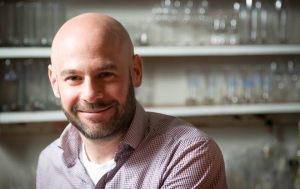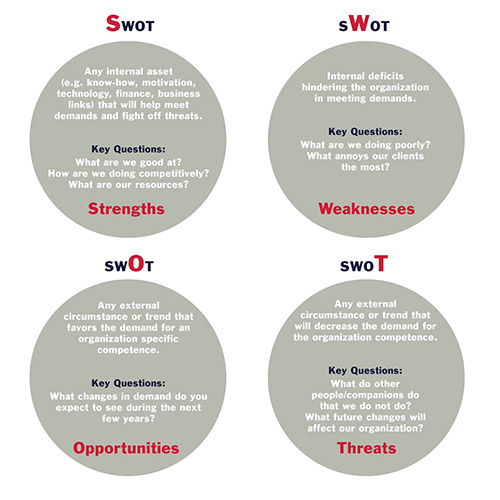Leaders,
 When you decide to start your own business, your career, personal finances, mental health and more are at stake. What probably drives you is the desire to be in charge of your own destiny, and making your own decisions. Entrepreneurship is neither easy nor risk free. If you want to have a chance at success, you even have to take significant risks. When starting a venture, however, don’t leave too much to happenstance.
When you decide to start your own business, your career, personal finances, mental health and more are at stake. What probably drives you is the desire to be in charge of your own destiny, and making your own decisions. Entrepreneurship is neither easy nor risk free. If you want to have a chance at success, you even have to take significant risks. When starting a venture, however, don’t leave too much to happenstance.
Choosing not to take risks means not to be an entrepreneur. Risk and entrepreneurship aren’t for everyone. There is no path to entrepreneurship without risk. Risk surrounds us. The flip side of risk is opportunity. And there is a direct relationship between risk and reward: The greater the potential upside, the greater the risk involved. Risk exists in any situation where there is a possibility of an outcome that we would rather avoid. Unforeseen circumstances and their negative consequences are the very essence of risk. Risk management means thinking about what could go wrong, and what should be done to mitigate those risks in a cost-effective way.
“Risk anything! Care no more for the opinion of others … Do the hardest thing on earth for you. Act for yourself. Face the truth.”
Katherine Mansfield, modernist writer (1888 – 1923), journal entry 14 Oct 1922
In 2013, Philipp Wanke made a tough decision: He left a steady job in the financial services industry to pursue a dream; he opened a brasserie and bar in Frankfurt’s fancy Nordend neighborhood. Gastronomy is a highly volatile and high risk industry. The pillars of his strategy are to combine traditional recipes with elements of modern cuisine, using fresh regional products, and collaborating with small producers on high-end food and beverages. Philipp made the leap of faith and inaugurated his “Wohnküche Nordend” a year ago. Check out his stylish place and menu here (in German): http://www.wohnkueche-nordend.de/
Philipp took the risky plunge and dove into his own bank accounts and savings to refurbish and furnish his brasserie. Soon, he was too busy to possibly secure an alternative line of income and his stress level continuously increased while assuring a regular cash flow. His daily routine had completely shifted; timing, reward, and values were very different from his former corporate job. With strong competition in the vicinity, he tirelessly researched what his guests’ interests were by talking to and observing them. It is impossible to predict customer’s behavior in a vacuum; you need to interact with them to gain relevant information.
The grea test challenge for him, though, was his reliance on one key employee: The chef. With his own company, Philipp was in the position to manage other people, i.e. service and kitchen staff for the first time. Fairness, collaboration and performance are very important to him; this is what he has tried to instill in his subordinates. Unfortunately, he had to let go off two full-time employees during the first half year. Then the chef turned out to be a drama-provoking maverick, who deteriorated the working atmosphere by refusing to communicate with the service personnel and carrying out his negativity in his environment. Despite many heart-to-heart conversations with Philipp, neither his attitude nor his behavior changed. The remaining Wohnküche-team has been working energetically in a joint effort to get things up and running. Philipp made the toughest decision as business owner: He fired the chef, and is doing the cooking himself now. A delicious choice.
test challenge for him, though, was his reliance on one key employee: The chef. With his own company, Philipp was in the position to manage other people, i.e. service and kitchen staff for the first time. Fairness, collaboration and performance are very important to him; this is what he has tried to instill in his subordinates. Unfortunately, he had to let go off two full-time employees during the first half year. Then the chef turned out to be a drama-provoking maverick, who deteriorated the working atmosphere by refusing to communicate with the service personnel and carrying out his negativity in his environment. Despite many heart-to-heart conversations with Philipp, neither his attitude nor his behavior changed. The remaining Wohnküche-team has been working energetically in a joint effort to get things up and running. Philipp made the toughest decision as business owner: He fired the chef, and is doing the cooking himself now. A delicious choice.
Risk is an integral part of entrepreneurship. What can you do to be prepared for challenges and take calculated risks?
- Start by assessing your personal tolerance for risk.
- Begin small and include the possibility to fail as well.
- Be aware and at ease with your worst case scenario.
- Practice, practice, practice. It makes any profession perfect.
- Watch, observe, and try to influence the outcome of risk.
- Minimize losses, learn from them, and live to fight another day.
- Heed Steve Job’s advice: ‘… say no to the hundred other good ideas that there are …’
- Involve your loved ones from the get go. Their support will be critical.
- Share your passion. Don’t take the entrepreneurial leap just for the money. Your passion will carry you through the days when risks and obstacles seem insurmountable.
- Keep an eye on the future.
By the way, risk types that startups and entrepreneurs typically manage, i.e. assess and initiate action, include political risk, cash flow and liquidity, commodity price, business interruption, innovation, attracting top talent, reputation, increasing competition, regulatory risk, weak economies etc. How much risk is appropriate? There is no magic formula telling us when risk is calculated and smart, versus when it is not.
“The fishermen know that the sea is dangerous and the storm terrible, but they have never found these dangers sufficient reason for remaining ashore.”
Vincent van Gogh, post-impressionist Dutch painter (1853 – 1890)
A good ol’ methodology – the SWOT analysis – helps diagnose potential company killers. The SWOT-analysis is a structured planning method used to identify strengths, weaknesses, opportunities, and threats involved in a project, transaction, or business venture. The model is based on a study by the Stanford University in the 1960’s; the most successful US companies were surveyed and analyzed. Their findings were eye-opening. The discrepancy between what organizations had planned for and what they actually had executed upon was 35%. The problem was not employee’s skill-sets, but blurry target-setting. Many employees did not know why they did what they did. As a result of this study, scientists developed SWOT for employees or project members to better understand the undertaking. Can you imagine where a startup venture ends up without clear goals and a vivid picture of the desired future state? How can you emphasize your strengths and counterbalance your weaknesses? How can you better utilize your opportunities and protect yourself from threats? The SWOT-analysis is famous for its versatility. It can be used for business-related decision-making as well as for finding solutions to personal situations.

In our coaching sessions, Philipp Wanke has filled in his personal SWOT analysis, and we have reviewed it on a regular basis. That’s one lever of his success and helps him keep on track. If you want to learn more about his transformational journey, read the online editions of the “Manager Magazin” (in German).
Entrepreneurs need strong confidence in themselves. Coaching provides them a safe space and helps them learn from failure, strengthen their ability to perform under pressure, establish a plan to take calculated risk, and to (re-)build their confidence. Contact me.
Wishing all startups and entrepreneurs the heart, soul, energy, resilience and confidence to thrive, Annette.
PS – Please find another article on startups here: https://www.inspired-executives.com/developing-startup-team/
